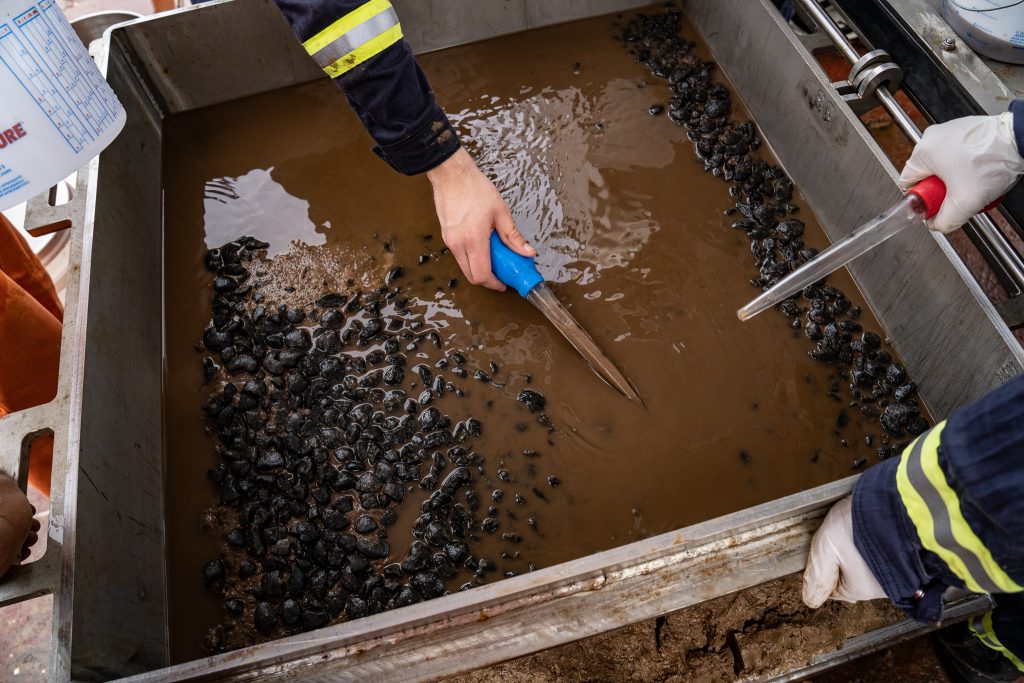
Nickel that The Metals Company mined from the bottom of the Pacific Ocean can be used in electric vehicle batteries, Geneva-based verification and inspection firm SGS says.
An SGS lab in Ontario produced high-purity nickel sulphate from polymetallic nodules, suitable for the battery chemicals market, the tester said this week.
The nickel sulphate was generated during hydrometallurgical bench-scale testing of the miner’s matte samples from their upstream pilot plant operations at SGS’s testing lab in Lakefield, Ontario. The Metals Company (TMC) hired SGS to test, confirm and optimize its onshore processing.
“The Lakefield-based extractive metallurgy team carried out a comprehensive test work program focusing on the optimization of a flowsheet producing cobalt sulfate, nickel sulfate, copper cathode and fertilizer byproducts from nickel matte samples derived from smelting TMC nodules,” Stephen Mackie, senior director of metallurgy and consulting at SGS North America, said in a release.
Ocean floor reserves of metals such as nickel, manganese and cobalt are estimated to be worth anywhere from $8 trillion to more than $16 trillion. But the UN-mandated International Seabed Authority still hasn’t issued rules governing seafloor extraction. The 169-member body is targeting next year for regulations.
TMC’s projects are ranked as the world’s first and second-largest undeveloped nickel projects, containing in situ quantities of nickel, cobalt, copper and manganese to meet the needs of 280 million electric vehicles – roughly the size of the entire US light vehicle fleet, the company says.
Scientists, however, say very little is known about the depths of the world’s oceans, and many are concerned about the impacts on these ecosystems already affected by pollution, trawling and the climate crisis.
Comments
Letícia Carvalho
Good reading